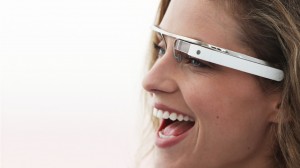
How will journalists could use Google Glasses ? It’s the wrong question.
The right question for journalists to ask is how and why will people who consume media use Google Glasses (or similarly wearable optic interfaces)?
Whenever I encounter media professors or media researchers testing how journalists could use Google Glasses, I ask them this simple question: what proportion of Google Goggles users will be consumer and what proportion will be journalists? My guess is the ratio 20,000 to one. Thus, which of the following two topics is more important for journalism schools to research:
- How will and why people use Google Goggles to consume news, entertainment, and information?
- How will and why journalists use Google Goggles to produce news?
The first question is clearly more important than the latter.
Journalists, particularly when they have a new toy, too often ‘put the cart in front of the horse’. When examining a new device or a new process, they think, ‘How can I use this to do what I do?’ rather than asking ,”How will people want to use this?” Imagine a chef who sees a new kitchen appliance and thinks, “Is there any way I can use this new device to make Chicken Marengo?” when his restaurant’s customers might instead be hungry for something other than that dish. Any industry that continues producing what it wants to produce when instead that product is not what people want or how people want to use that product, will fail. Ask the tens of thousands of newspaper reporters in the U.S. who’ve become unemployed during the past seven years before they and their bosses lost touch with what people want from them.
When journalism schools study what impact Google Glasses might have on their profession, the schools need to focus on: which topics, types, and modes of news will people want to consume while wearing such devices?
There are at least five possible topics of study about Google Glasses, and three of those also are what schools also need to study about the effects smartphones will have journalism:
1. Geolocation – What topics, types, and modes of news will people want to consume based upon their exact location as they roam?
2. Recognition – What topics, types, and modes of news will people want to consume based upon what they see as they roam?
3. Augmented-Reality – How best to provide, display, and explain news visually so that it overlays what they see?
Google Glasses add at least two more topics journalism schools need to study:
4. Hands-Free Context – What multimedia interfaces can be used so that people can interact hands-free with news provided in Augmented-Reality? (Unlike smartphones with touchpad interfaces, Google Glasses rely largely upon voice commands and simple scrolling motions; all of which somewhat restrict, compared to other computerized devices, how people interact with the device.)
5. Kinesthetic Context – Because Google Glasses are literally looking at whatever the wearer is looking at that moment (unlike a Smartphone or camera, which must be aimed), an unwavering gaze, how should the topics, types, mode, and displays of news or other information be automatically changed according to not only where the wearer is but what the wearing is doing? For example, a stationary person might want different news than someone who is moving at 30 kilometers per hour through the same spot and different than someone who is moving 150 kilometers per hour though that spot. Detailed texts might be fine for a stationary person, but not someone biking or driving past.
Google Goggles were invented as ways for people to access access information in the context of their lives, not the journalists’ lives.
Unfortunately, most of the research being done about Google Glasses in journalism school focuses on how journalists might use these devices for recording audio or video (most specifically, reporter’s point-of-view videos). Much of that research is well-meant but misguided. By almost all standards, Google Glasses are inferior to hand-held video cameras or even clip-on video recording devices. No surprises there. So, why research how to use an inferior device just because among the many things it can do is reproduce badly the capabilities of better usable devices?. The five research topics I’ve mentioned are more pertinent.
Google Glasses are novel to use, but many journalism schools are using the devices merely as new toys in the labs or excuses for ‘research’ which will likely be inconsequential. Journalism professors and instructors should remove their prototypes these spectacles and directly eyeball how consumers will use the devices. The answers to that are key.